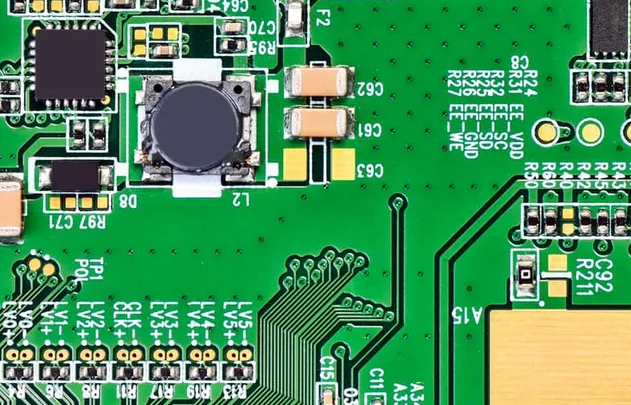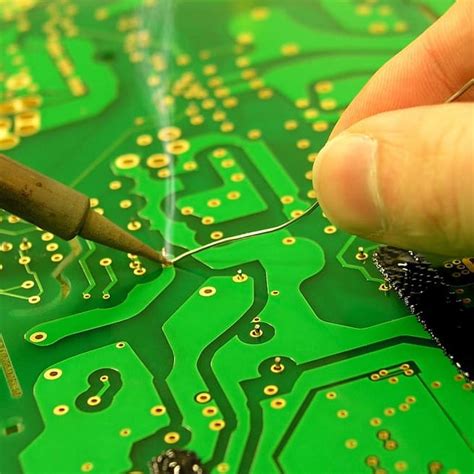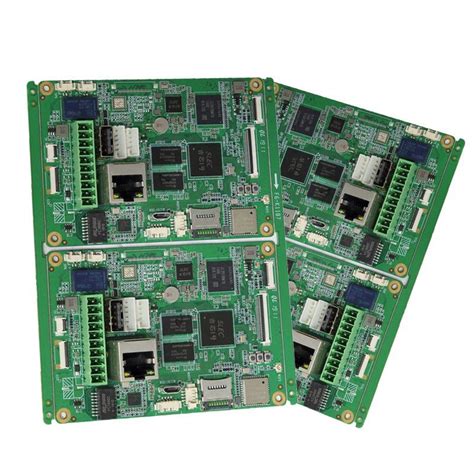What Problems Need to Be Solved by PCBs and Chips?
Introduction
In the rapidly evolving world of electronics, printed circuit boards (PCBs) and integrated circuits (chips) serve as the fundamental building blocks of nearly all modern electronic devices. While these two components work closely together, they each face distinct sets of challenges that engineers must address to meet the growing demands of technology. This article explores the key problems that need to be solved in PCB design and manufacturing as well as in chip development, highlighting their unique requirements and the interconnected nature of their challenges.

Part I: Problems PCB Technology Needs to Solve
1. Miniaturization and High-Density Interconnect (HDI)
As electronic devices become smaller yet more powerful, PCBs must accommodate an increasing number of components in shrinking form factors. This demands solutions for:
- Achieving finer trace widths and spacing (now routinely below 50μm)
- Managing complex multilayer designs (some PCBs now exceed 50 layers)
- Implementing effective high-density interconnect (HDI) technologies
- Balancing miniaturization with manufacturability and reliability
2. Signal Integrity at Higher Frequencies
Modern high-speed digital circuits and RF applications present significant challenges:
- Managing signal loss, reflection, and distortion at multi-GHz frequencies
- Controlling impedance matching throughout the circuit
- Minimizing crosstalk between adjacent traces
- Addressing skin effect and dielectric losses at high frequencies
3. Thermal Management
With increasing power densities, PCBs must effectively dissipate heat:
- Developing better thermal vias and heat spreading techniques
- Integrating thermal interface materials
- Managing CTE (Coefficient of Thermal Expansion) mismatches
- Designing for effective heat dissipation in confined spaces
4. Power Integrity
Ensuring clean, stable power delivery has become more challenging:
- Reducing power supply noise in high-current applications
- Managing voltage drop across the board
- Optimizing decoupling capacitor placement
- Implementing effective power plane design
5. Manufacturing Challenges
PCB fabrication faces several ongoing issues:
- Achieving higher yields with increasingly complex designs
- Reducing environmental impact of manufacturing processes
- Developing reliable flexible and rigid-flex PCB technologies
- Implementing cost-effective production of high-mix, low-volume boards
6. Reliability and Durability
PCBs must withstand various environmental stresses:
- Improving resistance to thermal cycling and mechanical stress
- Enhancing moisture and chemical resistance
- Addressing electromigration concerns
- Ensuring long-term reliability in harsh environments
Part II: Problems Chip Technology Needs to Solve
1. Moore’s Law Challenges
As traditional scaling becomes more difficult, chip designers face:
- Physical limitations at atomic scales (5nm and below)
- Increasing quantum effects in nanoscale devices
- Rising manufacturing costs at advanced nodes
- Developing alternative approaches beyond traditional CMOS
2. Power Efficiency
Power consumption remains a critical challenge:
- Reducing dynamic and static power consumption
- Managing power density and heat generation
- Developing more efficient power gating techniques
- Optimizing voltage-frequency scaling
3. Memory Wall and Bandwidth Limitations
The gap between processor speed and memory performance persists:
- Reducing latency in memory access
- Increasing bandwidth between processors and memory
- Developing new memory architectures (HBM, HMC, etc.)
- Integrating memory closer to compute units
4. Heterogeneous Integration
Modern chips incorporate diverse technologies:
- Developing effective 2.5D and 3D integration techniques
- Managing thermal issues in 3D-stacked designs
- Implementing reliable through-silicon vias (TSVs)
- Integrating disparate process technologies on single packages
5. Security Concerns
Hardware security has become paramount:
- Preventing side-channel attacks
- Implementing secure hardware roots of trust
- Developing tamper-resistant designs
- Ensuring supply chain security
6. Specialized Computing Architectures
The end of Dennard scaling has driven architectural innovation:
- Developing efficient AI/ML accelerators
- Optimizing designs for specific workloads
- Balancing programmability with specialization
- Implementing efficient reconfigurable architectures

Interdependence of PCB and Chip Challenges
Many challenges at the PCB and chip levels are interconnected:
1. System-Level Co-Design
- Developing chip packages that ease PCB routing challenges
- Creating PCB technologies that support advanced packaging
- Coordinating signal integrity across chip-package-PCB boundaries
- Aligning thermal management strategies
2. Power Delivery Networks
- Optimizing power delivery from VRM to silicon
- Managing transient responses across the system
- Coordinating decoupling strategies
- Addressing simultaneous switching noise
3. High-Speed Interfaces
- Maintaining signal integrity across chip-to-chip interconnects
- Implementing effective equalization strategies
- Managing reference clock distribution
- Compensating for interconnect losses
Emerging Solutions and Future Directions
For PCBs:
- Adoption of advanced materials (low-loss dielectrics, thermally conductive substrates)
- Implementation of embedded components and active substrates
- Development of additive manufacturing techniques
- Integration of optical interconnects
For Chips:
- Exploration of novel transistor architectures (nanosheet, CFET)
- Adoption of chiplets and modular design approaches
- Implementation of optical I/O for chip-to-chip communication
- Development of 3D monolithic integration
Conclusion
Both PCB and chip technologies face significant, though distinct, challenges as electronic systems continue to advance. PCBs must solve problems related to interconnect density, signal integrity, and thermal management in increasingly compact form factors, while chips grapple with fundamental physical limits, power efficiency, and architectural innovation. The solutions to these challenges often require coordinated advances in both domains, as the boundary between chip and board continues to blur through advanced packaging technologies. Addressing these problems effectively will determine the pace of innovation across the entire electronics industry, enabling the next generation of computing, communication, and embedded systems. Future progress will depend on close collaboration between PCB designers, chip architects, materials scientists, and manufacturing experts to develop holistic solutions that optimize entire electronic systems rather than just individual components.







